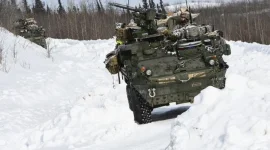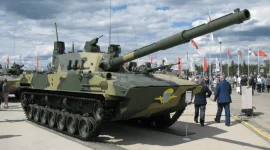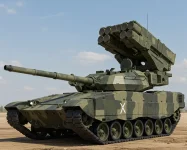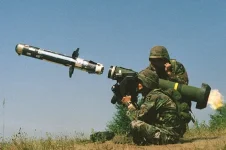- Views: 2K
- Replies: 13

A recent photograph circulating online depicts an Indian Army unit employing a Royal Enfield Bullet motorcycle as a mobile platform for launching an Anti-Tank Guided Missile (ATGM) at the Pokhran field firing range in Rajasthan.
The image has quickly gained traction on social media, generating considerable interest in the Indian armed forces' innovative approach to combat readiness.
The photograph illustrates a practical and inventive adaptation by the Indian Army, showcasing its capacity to utilize existing resources in military contexts.
The Royal Enfield Bullet, renowned for its ruggedness and dependability, is seemingly being used to improve the maneuverability and deployment speed of ATGMs on the battlefield. Royal Enfield motorcycles have a long history of use within the Indian Armed forces, with the first bikes going into service in 1949.
Mounting an ATGM on a motorcycle presents several tactical benefits. These include enhanced mobility, the ability to rapidly reposition the missile system, and a smaller logistical profile.
This method facilitates swift "hit-and-run" maneuvers, which are particularly effective in ambushes and asymmetric warfare situations. Asymmetric warfare refers to conflict between opposing forces which differ greatly in military power and tactics.
The use of mobile platforms like motorcycles can be advantageous for infantry units operating in difficult terrain, common in many areas of potential conflict, providing them with a significant tactical advantage.
The presence of this unusual configuration at the Pokhran range indicates that the Indian Army is exploring novel operational strategies. The ability to mount ATGMs on diverse platforms could reshape future combat, especially in enabling highly mobile infantry units to counter threats from armored vehicles.
While several types of ATGMs are in use and in development in India, it is at present unclear which exact model is seen in the image.
The image has also sparked interest among defence experts and military enthusiasts globally. It remains to be confirmed whether this represents an officially adopted tactic undergoing formal evaluation or a field-level innovation by soldiers experimenting with new approaches.
Regardless, the image underscores the Indian Army's commitment to adaptability and resourcefulness in an evolving security landscape.




